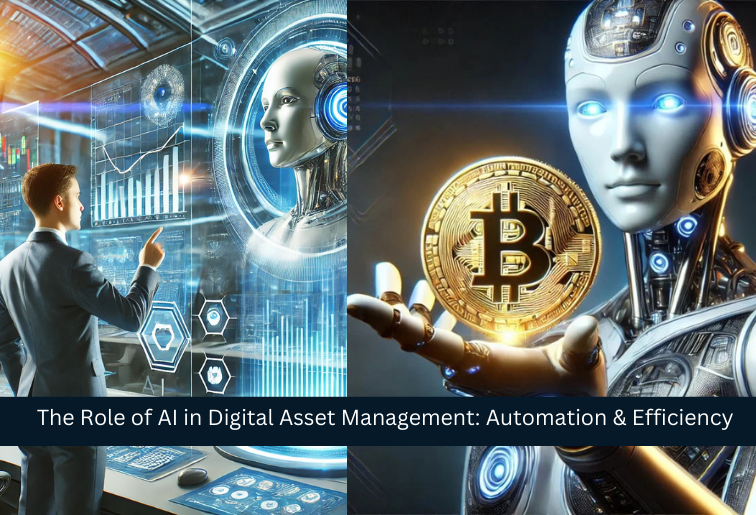With the rapid-changing digital era, businesses constantly seek innovative ways of cost-efficient management of their assets. Digital Asset Management (DAM) is a crucial solution to digital asset storage, upkeep, and retrieval in the form of images, videos, documents, and other media. With the rapid-changing amount of digital information, traditional practices of keeping such assets are no longer relevant. Come in Artificial Intelligence (AI), a revolutionary technology that is revolutionizing the Digital Asset Management industry.
We at Blockchain77 recognize the significance of being ahead of the curve when it comes to technology trends, particularly where productivity and precision cannot be sacrificed. Utilizing AI in DAM systems is empowering companies to automate, make smart data-driven decisions, and attain operating efficiency.
What is Digital Asset Management?
Digital Asset Management is the process and technology by which organisations can own, store, and retrieve digital assets. From images and video, to documents and graphics, to more physical forms of file such as computer program code, virtual goods, and NFTs (Non-Fungible Tokens), they vary. With more and more users and businesses producing increasingly digital content day-to-day, it is natural that they are being well controlled.
Effective DAM systems allow businesses to circumvent time wastage, avert duplication, enforce compliance, and remain within intellectual property and legal limits. The volume of data, however, makes it very difficult to manage assets manually, and that is where AI comes into the picture.
The Role of AI in Digital Asset Management
AI is about to be incorporated into the Digital Asset Management systems of the present. AI is transforming digital asset management with data analytics, machine learning, and automation. Let us observe how AI is helping this industry:
1. Automation of repetitive tasks
The biggest advantage of AI-based DAM is to make the job of manual labor automated. Digital materials were previously labeled and classified by human resources manually, and all these errors and inefficiencies resulted in. AI-based DAM systems automatically label, classify, and index digital content with the assistance of content analysis. AI-based systems classify images, videos, and other content effectively based on pattern and type analysis of contents.
This work automation is releasing time to be used for more creative and higher functions, releasing more resources to allow for this to occur. It gets things right also in a way that allows for assets to be properly tagged and coded, and it streamlines the retrieval process.
2. Enhanced Search Capabilities
The success of a DAM system is highly dependent on the ability to search and retrieve assets in a timely manner. Keyword searching is misleading, especially if tags or metadata are incomplete. Artificial intelligence can be used to enhance more advanced capabilities for natural language processing (NLP) and image recognition solutions.
For example, AI can journey on videos and images and recognize faces, scenes, or objects without metadata. It is far more intuitive to search on video and image content or even on keywords. AI-powered DAM systems can recognize and provide answers a lot more naturally the way humans interact, making the user interface far, far more effective.
3. Improved Asset Security
Digital assets are valuable, and business is most interested in digital asset security. AI is being used more and more to protect and secure digital assets by identifying unwanted access and identifying potential security breaches. Machine learning processes can authenticate usage patterns and identify anomalies in preventing data loss or data theft.
Besides that, AI is able to watermark and monitor digital assets in a way that intellectual property rights will be guaranteed. That is particularly required where protection of confidential information would be of utmost concern priority.
4. Personalized Recommendations
Another groundbreaking feature of AI with DAM is the ability to allow users to receive personalized recommendations in line with what they do and what they are interested in. As it goes to understand how the users engage with the digital assets, AI can be able to recommend content of relevance to a user and can be informative or beneficial to him/her. This leaves room for automation as the users can be able to easily obtain the best appropriate assets without necessarily having to search through enormous groups.
Besides that, AI can predict trends and make companies trend leaders by analyzing trends in information. This is particularly relevant to information-based businesses such as media, entertainment, and e-commerce.
5. Solid Asset Version Control
Versioning of digital assets is a complicated process and prone to variance and misunderstanding. AI can be used to version assets through tracking change in digital assets and automatically altering metadata. AI can even alert users regarding real-time asset change and maintain only current versions in operation.
This reduces the risk of application of older or incorrect assets and ensures uniformity on each platform and channel.
Conclusion
AI for Digital Asset Management is actually revolutionizing the way digital assets are managed within organizations. By automating tasks of routine nature, improved search, improved security, improved recommendations, and easier versioning, AI is enabling organizations to make processes smoother and more productive.
We likewise at Blockchain77 see the need to deploy cutting-edge technologies such as AI in a bid to stay relevant and functionally effective in a Digital Transformation era. AI farther along in the future, its function in Digital Asset Management is sure to be an increasingly critical constituent, compelling organizations to make optimal use of maximum possible value for their digital assets.
If you are prepared to leverage your digital asset management to its full potential, today is the day to learn about how AI will enable automation and efficiency for your business. Equipped with the proper tools, your company can remain ahead of the curve while the constantly expanding digital universe just continues to expand.

